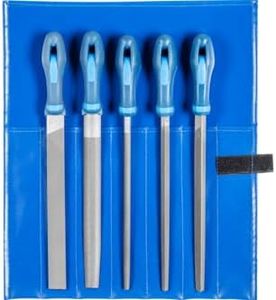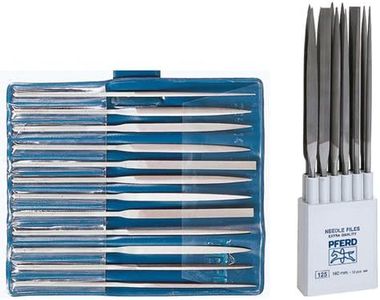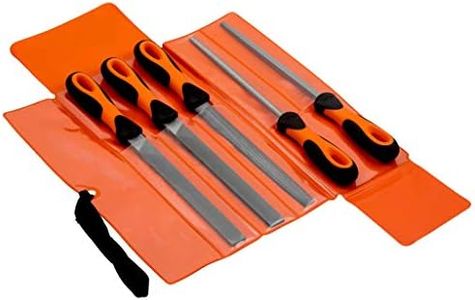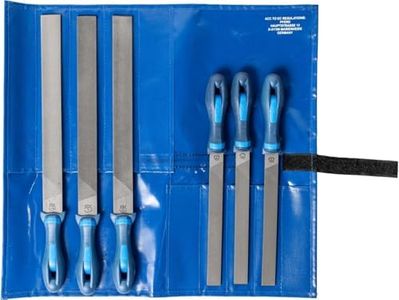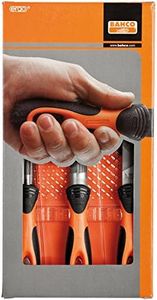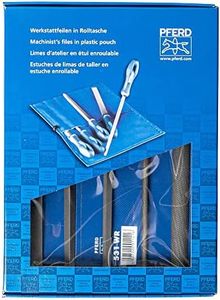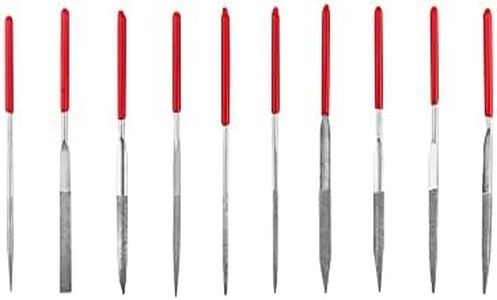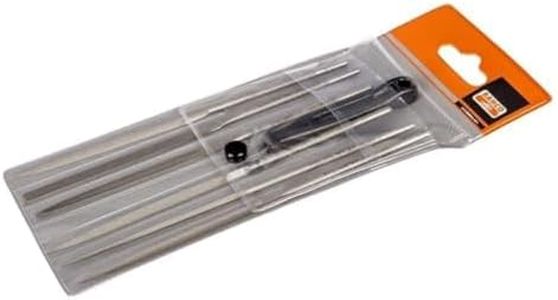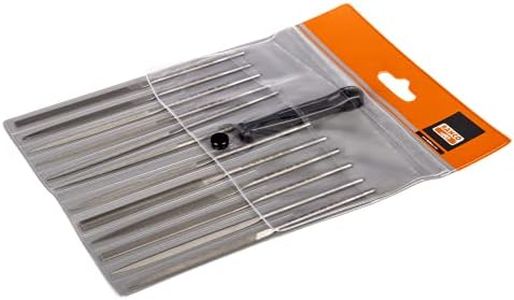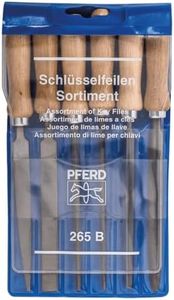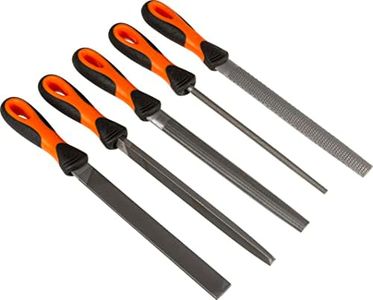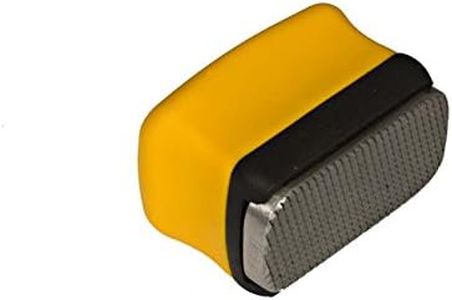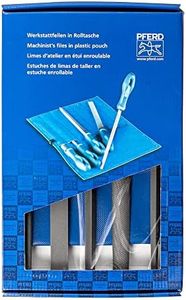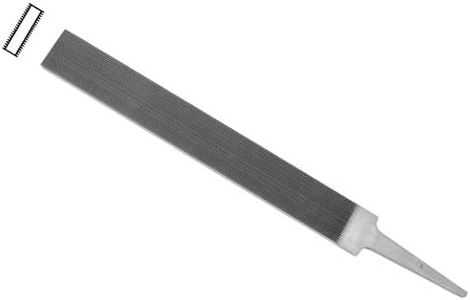We Use CookiesWe use cookies to enhance the security, performance,
functionality and for analytical and promotional activities. By continuing to browse this site you
are agreeing to our privacy policy
10 Best Machinist Files
From leading brands and best sellers available on the web.Buying Guide for the Best Machinist Files
Choosing the right machinist file can make a big difference in the quality and efficiency of your work. Machinist files are hand tools used for shaping, smoothing, and removing small amounts of material from metal workpieces. With so many types, shapes, and materials available, it's important to match the file to your project needs, the type of material you’re working on, and the finish you want to achieve. Understanding the key specs will ensure that your file helps you get the job done precisely and comfortably.File ShapeThe shape of a file refers to its cross-sectional profile, such as flat, round, half-round, square, or triangular. Each shape is designed for a different type of job: flat files are useful for general surface smoothing, round files for enlarging round holes, half-round files for both flat and curved surfaces, square files for slots and keyways, and triangular files for corners or angle cuts. Think about the shape of the area you’ll be filing and choose a file that matches—it makes the work both easier and more precise.
File Cut (Coarseness)File cut describes the pattern and spacing of the teeth on the file, which determines how aggressively it removes material. Common levels are smooth, second, and bastard cuts, from fine to coarse. Fine files (smooth cut) are best for finishing and small adjustments, medium (second cut) are for moderate material removal and shaping, and coarse (bastard cut) are for quickly removing material. Pick a finer cut for detailed work or a smoother finish, and a coarser cut to quickly shape or reduce large areas. Consider starting with a coarse file and moving to a finer one as you get closer to your final shape.
File LengthFile length measures the distance from the tip to the heel (not including the tang or handle). Longer files are generally more efficient at removing material and are preferable for larger surfaces or longer strokes. Shorter files offer more precision and control for small or delicate work. Choose a length that suits the scale of your project—use a longer file for big jobs and surfaces, and a shorter one for fine detail or confined spaces.
File MaterialMost machinist files are made from high-carbon steel or alloy steel, making them durable and capable of cutting metals. The quality of the steel is crucial because it affects how long the file stays sharp and how well it maintains its shape. For general metalwork, standard high-carbon steel is sufficient, while alloy steel provides extra hardness and wear resistance for more demanding tasks. Consider the hardness of the materials you'll be filing—a harder file is needed for tougher metals.
HandleThe handle is the part you grip while working and is important for comfort and safety. Some files come with a fitted handle, while others are just the file itself and need a handle attached. Ergonomic handles reduce hand fatigue on long jobs and help prevent slipping. If you’ll be using the file frequently or for long periods, pay attention to handle comfort, whether it’s integrated or can be chosen separately to fit your hand.
